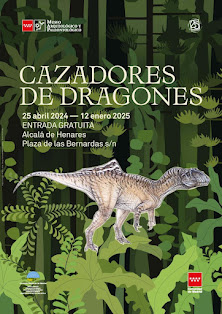Miembros del Grupo de Biología Evolutiva de la UNED han presentado durante las IX Jornadas Internacionales sobre la Paleontología de Dinosaurios y su entorno, el trabajo titulado “First record of a probable squamate reptile from the Cenomanian of Algora (Guadalajara, Central Spain)” en formato póster. En esta comunicación se ha presentado un estudio anatómico comparativo de un único elemento vertebral perteneciente a un reptil escamoso con otros escamosos del Cretácico de Europa. Este registro supone la primera evidencia de la presencia de este grupo en el Cenomaniense (Cretácico Superior más basal) de Algora (Guadalajara, España), representando una posible nueva forma. A continuación, os dejamos el resumen perteneciente a este trabajo:
The Cenomanian (basal Late Cretaceous) vertebrate fossil record of Europe is relatively poorly known due to the scarcity of remains compared to those of other geological stages. The Cenomanian record is essential in the understanding of the faunal turnover that took place between the Early and Late Cretaceous since the European uppermost Cretaceous faunas were radically different from those of the Lower Cretaceous ecosystems. In this sense, the palaeontological area of Algora (Guadalajara, Central Spain) represents the first location with a high concentration of macrovertebrate remains from the Cenomanian of Europe. The Algora fossil site has yielded numerous vertebrate fossil remains, increasing the knowledge about the faunal taxa from this transitional period. In this context, the European oldest or youngest record of certain lineages previously thought to be extinct at the Early Cretaceous or not yet present at the Late Cretaceous has been recognized. The faunal assemblage of Algora is so far represented by an osteichthyan member, stem and pleurodiran turtles, an indeterminate elasmosaurian, two neosuchian crocodiles, a theropod, and a sauropod. Recent finds in this locality, hitherto unpublished, allow us to recognize several previously unidentified taxa. In this sense, a vertebra of a probable squamate reptile has been recognized. Its detailed systematic study is performed here, in addition to a comparison with fossil remains from other Cenomanian sites and from other stages of the Early and Late Cretaceous.
Más información:





























No hay comentarios:
Publicar un comentario